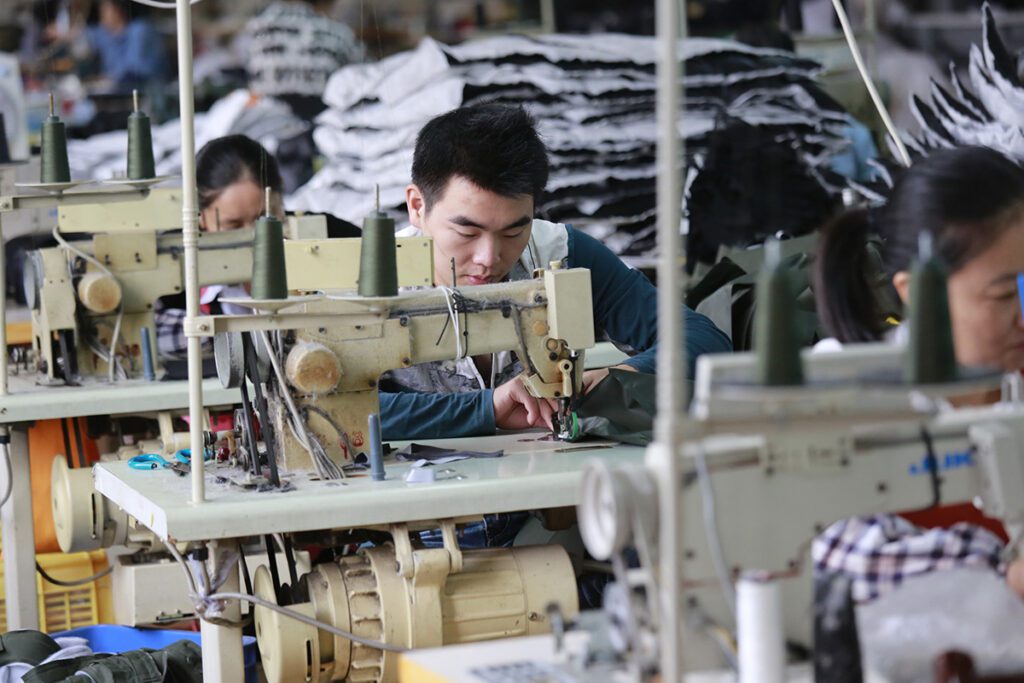Because Thumbprint handles a significant number of custom branded product and apparel orders, we have key partners “on the ground” across all the major international manufacturing regions. While general consensus is that the US is starting to see some relief from recent global supply chain challenges, we’re hearing from our team in China that there’s a good chance we aren’t out of the woods yet.
Kinks in the global supply chain, as detailed in a previous post, dramatically impacted lead times for many holiday items. Unfortunately, shipping delays, the Chinese New Year, and the Beijing Winter Olympics will combine to have a huge impact on the supply chain and push lead times for the global supply chain to around three months during Q1 2022.
The bottom line is that custom orders placed after December 15th will not arrive until next March unless they are air-shipped.
One of our partners explains why the Chinese New Year, which begins January 31st, normally impacts manufacturing lead times, cost, and quality:
1. Factories are low on cash.
While this might seem counter-intuitive coming off the busy 4thquarter, the Chinese New Year can be expensive for companies who are culturally obligated to host lavish parties and give staff bonuses (an additional month’s salary for most workers).
Manufacturers are anxious to book new orders but don’t necessarily have the staff to complete them before the holiday. They will often secure orders by warning about upcoming price increases. The resulting backlog will add an additional 1-2 week to items placed after December 1.
2. Migratory workers save up their vacation days to take around the Chinese holiday.
Because of course they want time off for one of the most significant Chinese celebrations. Senior workers are given priority when booking vacation days. This means plants may be staffed, but operations are run by less experienced workers. As a result, inventory could be produced by two entirely different teams, resulting in quality issues and delays.
3. Shipping volume increases as available labor decreases.
As workers begin heading home just before the next Chinese New Year, shipping capacity begins to decline and costs are therefore pushed higher. Customers all rushing to get their order “on the water” last minute before the start of the holiday only compounds the situation.
All that being said, here are some insider tips to help you navigate these obstacles and plan ahead for the upcoming Chinese new year:


Many factories will be closing for a month, impacting shipments of branded products during Q1.
1. Avoid straddling the Chinese New Year if you need Q1 delivery.
•The month-long celebration halts all production.
•It can then take a week or two to bring a factory back online (depending on which members of leadership return on time).
•Very few manufacturers produce everything in-house, so even though a particular manufacturer might be on-line, the upstream factories they depend on may not be. What is normally a 30-day lead time can quickly spiral to 70-80 days.
•As mentioned earlier, jobs started before the Chinese New Year may be finished by a different team (depending on where migratory workers are returning from). This can cause significant inconsistencies across a product run.
2. Discounts may be available for those who can wait.
Material prices, and therefore product prices, typically do increase after Chinese New Year. However, manufacturers are also anxious to restart their production lines right after the holiday. Manufacturers may also have hedged and bought additional materials and enough stock at pre-New Year rates, which means price increases may not be felt until April. If your campaign can wait until Q2, you may be able to take advantage of discounts by ordering now.
3. You must order now for delivery before February.
Orders that do not ship before the Chinese New Year might not be released until the end of February or early March. This will depend heavily upon when ports open and warehouse staff arrive to ship goods. Based on current ocean shipping lead times, goods ordered at the end of December may not arrive until April, and that’s providing everything goes smoothly.
If you’re planning on incorporating custom branded items or apparel into any Q1 campaigns, you should contact your provider now to discuss your project. If you need up-to-date information on production lead times, global supply chains, or need help with a custom project, please feel free to contact us!



